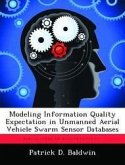The Air Force emerged from the Vietnam Conflict with an appreciation for the capabilities of unmanned aircraft. Unfortunately, steep budget cuts following the war caused their virtual elimination from the inventory. During the 1980s and 1990s technological advance led to the development of UAVs that operated much like crewed aircraft. By the early 1990s, industry demonstrated near-real-time control of a UAV through a satellite. This led to the MQ-1 Predator. Further advance sparked the arming of Predator and new networked spans of control. Taking the form of remote-split operations and multi-aircraft ground-control stations, these advances forced changes to employment doctrines, training regimens, and personnel policies. From its inception, the Air Force pledged to treat Predator as an airplane. Although the analogy initially served the program well, the advent of networked spans of control began to raise questions about the analogy. Two important contextual factors acted as a backdrop throughout. These were cultural perceptions of UAVs and the ever growing demand for Predator coverage in Operations Iraqi Freedom and Enduring Freedom.








